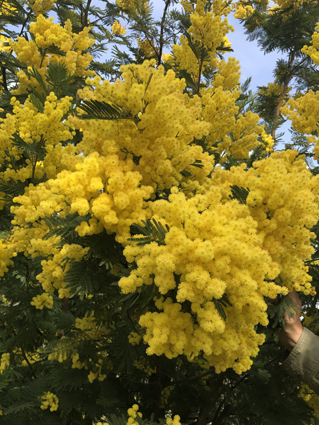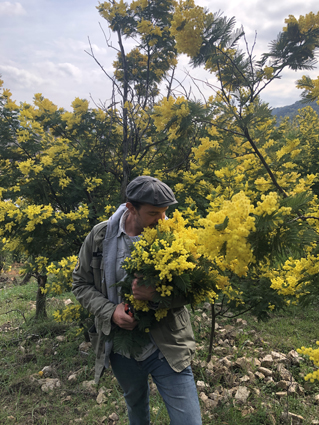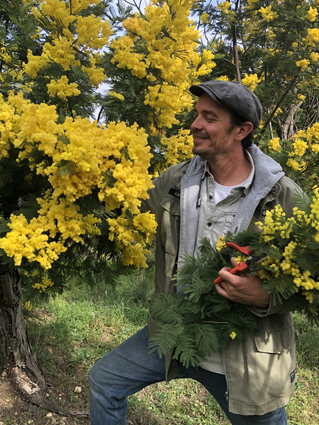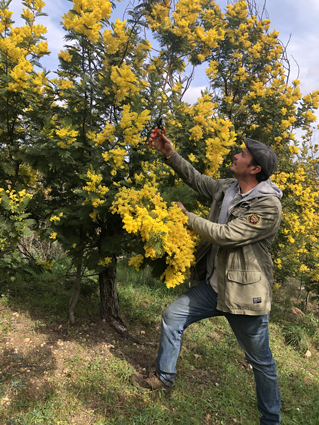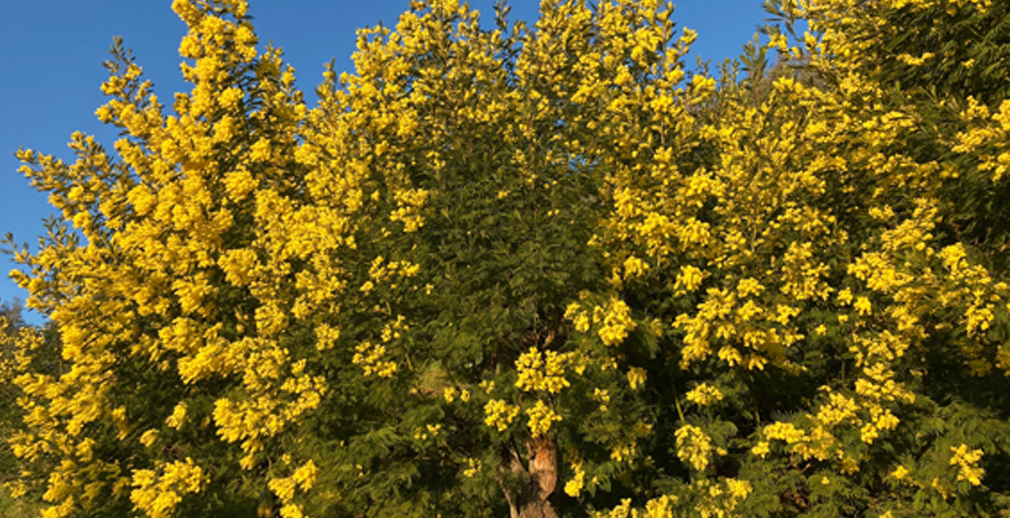Mimosa dealbata
In this month of February the Mimosa comes to illuminate our hills of Pégomas by its color and smell so characteristic.
If the Mimosa is known in the Mediterranean since antiquity, thanks to African and Asian varieties, it was the explorations of James Cook, at the end of the eighteenth century, which allowed Europeans to discover new varieties from Australia, including Acacia dealbata.
Thus, after being acclimatized in the gardens of Château de Malmaison around 1800, it is to the English that we owe the introduction of mimosa on the Côte d’Azur.
The first Acacia dealbata was planted second half of the nineteenth century by the famous rose grower Gilbert Nabonnand, in Golfe-Juan, who passed the torch to his sons Paul in Golfe-Juan and Clément in Mandelieu.
First used for its ornamental qualities, it is immediately cultivated for bouquets shipped throughout Europe, then, from the end of the nineteenth century, by the perfumery of Grasse which draws an extract.
Quickly escaped from cultivation, now considered an invasive species, Mimosa has become an emblematic plant of the Côte d’Azur.
Alix Abello, a member of the Mul family, has been in charge of this harvest on our own plots since the end of January. He works with passion every day to harvest open branches and flowers with a team of 9 people.
Concerned about the good health of the trees and the reduction of the environmental impact of the crop, Alix ensures the renewal of Mimosa dealbata on all plots by guaranteeing complete traceability.
After the harvest of the day, the Mimosa is transported to the extraction site to make an absolute of Mimosa dealbata Country, integrated into the Absolute Geographical Indication Pays de Grasse. The cultivation of Mimosa and its transformation are part of the historical heritage of perfume plants. In this way, we promote the transmission of local know-how with all our interested parties.
